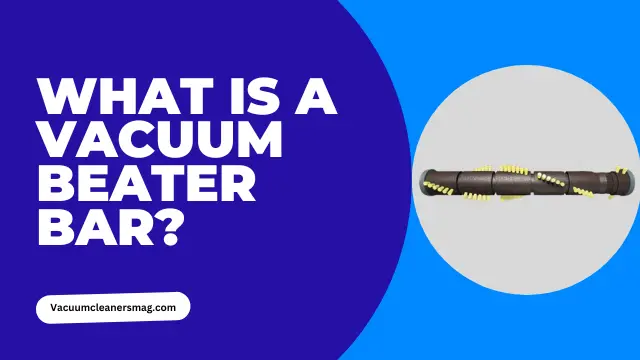Just like old gadgets – the vacuum beater bar has become obsolete. However, many users still mistake the brush strips on a brush roll as the device’s beater bar. This begs the question: what is a vacuum beater bar?
Simply put, a vacuum beater bar is a metal agitator found in a vacuum cleaner’s roller brush. Although the component has become ancient – you can still benefit from it! However, there are some factors that you might need to consider.
The following passage will take you through a detailed overview of the vacuum beater bar, and will help you decide whether it’s of use to you, or not. Let’s begin!
When Was the Beater Bar Introduced?
Let’s go back in time!
Hoover, a brand you might have heard of, launched this component around 1920. During the time, none of Hoover’s competitors had a beater bar coming with their vacuum cleaners. Therefore, this made Hoover stand out from the crowd, and also, provide an efficiency of 101% to their consumers!
This gave rise to Hoover’s bold claim: “Positive Agitation”
But also, a new slogan stated “It beats, as it sweeps, as it cleans.”
Up till the 70s, Hoover used this accessory to their advantage – until things started to change.
What is a Beater Bar on Vacuum Cleaners Used For?
A beater bar on your vacuum cleaner comes in handy if you own high-pile carpets. However, in the case of fragile, low-pile carpets, hardwood, or laminated floors – the beater bar is no less than a nightmare!
Generally, beater bars provide a vibrational action to the floor or carpets that you clean. This vibrational action helps in deep cleaning and removing dirt, pet hairs, and allergens from the roots of your carpets.
In other words, the beater bar vibrates your carpets, displaces the dirt hiding deep inside the carpet’s fibers, and pushes them out. Afterward, the suction of your vacuum cleaner sucks these particles and sends them to the bin compartment.
You may wonder why I started this article by terming the beater bar as an “old”, “obsolete” component. Well, that’s because the latest vacuum cleaners have come up with modes that surpass the beater bar in efficiency, and cleaning.
I’m referring to the stiffer brush strips you see in new vacuum cleaners these days. These brush strips not only provide agitation but also, do a great job in cleaning too. So, why would you opt for a beater bar when you have a 2-in-1 package, right?
Also Read: Users with a beater bar vacuum may encounter this situation “Brush Roll Stops Working Even Indicator Light is Green”
How Do Beater Bars Work?
The era of beater bars is over. However, the term is still in use, but wrongly. Many users term the brushes present on the roller brush as the traditional beater bars.
For vacuum cleaners that are made specifically for high-pile carpets, there is a certain workaround they use, which includes the evolved beater bar.
Upright vacuum cleaners use a “brush roll feature” specifically for cleaning dust off of carpets. This brush roll, or the evolved beater bar, works either on electricity or air.
The motor gives power to a drive belt inside your vacuum cleaner, allowing your brush roll to do the magic. Due to this, brush rolls on the latest vacuum cleaner average 6,500 revolutions per minute!
But what keeps the beater bar in place?
This job is done by a dedicated belt that’s attached to the suction motor of your vacuum cleaner.
Is it Worth Going For a Beater Bar Vacuum Cleaner?
It all comes down to your household items (carpets, floors, etc.)
A vacuum cleaner with beater bars is your most viable option if you possess high-pile carpets. This is because of the vibrate-and-clean function present on such vacuum cleaners due to the beater bar.
However, if you possess low-pile carpets, laminated floors, or hardwood, then a vacuum cleaner with no beater bars is your best option.
Conclusion
What is a vacuum beater bar? Initially, it was a metallic agitator found on old vacuum cleaners. The feature was introduced in 1920 by Hoover. Although the component has become obsolete, the beater bar is still mistakenly referred to as the strip brushes on a vacuum cleaner.
The evolved beater bar comes in handy for fluffy, high-pile carpets to efficiently clear out dust particles embedded deep within the roots. However, the result is the opposite if you own low-pile carpets, laminated floors, or hardwood.

Hi Everyone.
I’m Safeer. I always loved trying out the latest cleaning and home products and sharing my thoughts about those products with you awesome people. Whether it’s related to general cleaning or it includes cleaning with high-tech vacuum cleaners, I always test them myself and then share valuable opinions with you. Additionally, I also let you know how to resolve particular issues of vacuum cleaners. To look for detailed reviews and troubleshooting tips about vacuum cleaners VaccumCleanersMag is the perfect abode for you.
